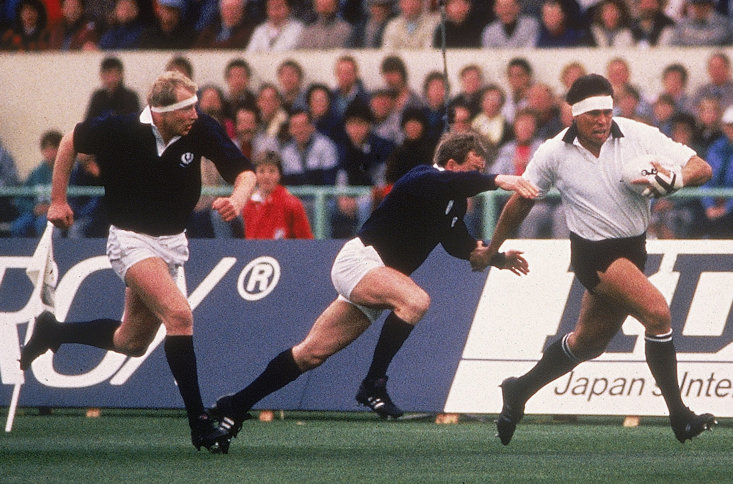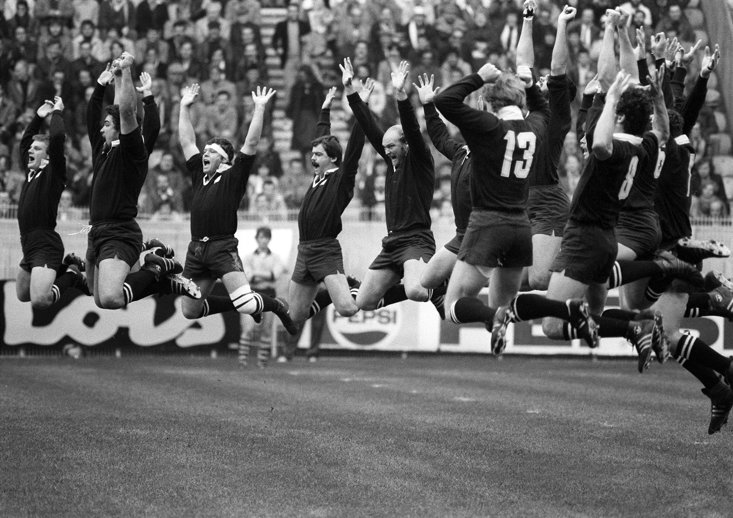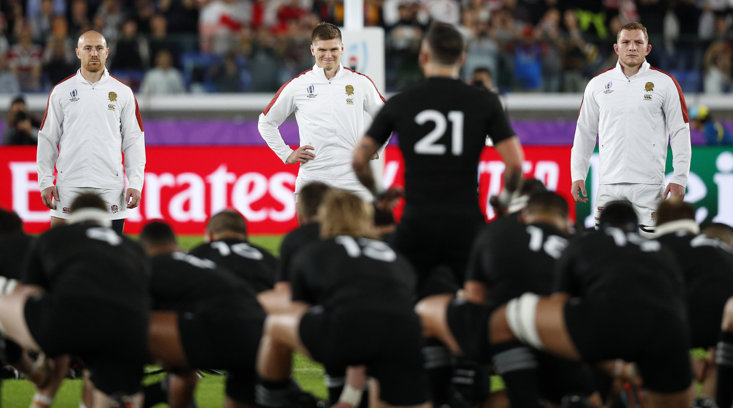The haka is unparalleled. Nothing else in the sporting world creates so much anticipation, ignites so much passion or can strike fear into the opposition quite like this epic pre-match tradition. As the All Blacks line up against Australia for the third game of the Bledisloe Cup on Saturday, they will once again honour their Maori roots before kick-off by performing the Kapa O Pango. That's right, the current variation is not called simply 'the haka', since there are different types, respresenting different origins, each with its own meaningful name.
But the haka hasn’t always been held in such high esteem. Oh no friends, in fact 35 years ago it was destined to be scrapped altogether, until one man, one legend, stepped up.
A man who tore his scrotum and kept on playing, despite needing 18 stitches. A man who knocked out his opponent in a World Cup semi-final and avoided a red card. A man who epitomised what the All Blacks were all about and didn’t lose a single game as captain. He goes by the name of Wayne ‘Buck’ Shelford, and he’s the man who saved the haka.
“Without Wayne Shelford there would be no haka now,” New Zealand rugby journalist Jamie Wall and co-author of ‘Facing the haka’ tells The Sportsman.
“If the All Blacks had kept on with the old, untrained version then pressure would have come for them to just drop it.”
You see, in the 1980s the haka was in a bad way. Only performed on away soil, and never practised, it was for the majority of its existence an uncoordinated, out of time jig, more likely to make their opponents keel over with laughter than fear. With the very first World Cup on the horizon, All Blacks captain Buck, who is of Maori descent, took his team by the balls and transformed the haka.

“He was the guy who just drew a line in the sand and said, ‘right, we are going to do it properly or not at all,’” says Wall. “Someone of his manner and his knowledge was able to make that call and because he was the biggest, most fearsome guy in the team it was pretty hard for anybody to say no! He was also the first one to say ‘okay, we are going to set aside 15 minutes at the end of training to practise the haka.’”
And the swashbuckling Buck was also the man who made the decision to perform the haka ahead of every game, not just selected tour games. No excuses, go hard or go home.
Come the 1987 World Cup, which was co-hosted by New Zealand and Australia, the haka was now something the players revelled in. They were uniform and neat, and New Zealand’s success in winning that tournament, combined with the huge increase in television audience, meant the haka was seen and respected around the world.
“It showcased a lot of New Zealand,” author Wall explains. “The All Blacks are really brand ambassadors for our culture so it is in our best interest to do it properly and show off what our culture means to the world. It is the one unique thing we have, our Maori indigenious culture. You can't replicate that, you can't find it anywhere else.”
Buck’s career naturally waned in the early 90s, but his legacy lives on in the haka. As the sport turned professional in 1995, its popularity and profile increased, as the line between sport and entertainment became ever more entwined. And as the sport of rugby evolved, so too has the haka.

For over 100 years, the All Blacks jumped in the air at the end of the haka, you can see in all of the old footage online that this was a key part of the routine. However, in 2005, they did away with the jump for a few reasons and, of course, Buck once again was the pioneer of this crucial change.
“There were a couple of players like Buck who just refused to jump at the end because they thought standing there and looking staunch was more intimidating,” says Wall. He was right too. The famous stare down at the end of the haka now produces some of the finest images in sport, but there was another big change that meant the jump was lost. The introduction of a new haka.
In 2005, Kapa O Pango, a haka designed specifically for the All Blacks, was introduced and the cultural adviser who taught the squad this haka stated that the players should stand still at the end, rather than jump. But why was this introduced after over 100 years of the perfectly good ‘Ka Mate’?
“Ka Mate belongs to this one tribe in Wellington and they have to pay every year to use it. The All Blacks wanted something they owned,” Wall reveals. “They wanted something that was specifically about them, they wanted to honour themselves. Also, it is just kind of cool to have something to bust out for the more important games. Kapa o Pango only gets used for the most important games, like a World Cup final or a Lions tour match or whenever they play the Springboks, who are New Zealand’s biggest rivals. That was the thinking behind that, they wanted something special for their special games.”
One of the most exciting parts of the haka in recent years has been the opposition’s response to the challenge laid down by the All Blacks. From the French’s arrowhead challenge in the 2011 World Cup final to Owen Farrell’s smirk for England in last year’s semi-final, the crowd and players seem to love when the opposing team responds.

“Any team has any right to do whatever they like in response to the haka. It is a challenge,” adds Wall. “People think it is something purely for the All Blacks. While that is true as the All Blacks get a lot of psychological energy out of it, it traditionally means that I respect you or I honor you. To respond to it, by singing or standing in a line, or advancing on it is any other country's way of answering the challenge by putting down a challenge of their own. The All Blacks love it, they embrace the challenge that the other teams want to bring and the crowds love it too.”
From uncoordinated and unwanted dance to one of the greatest spectacles in the sporting world, the haka has come a long way in 35 years, and Buck Shelford is the man who made it happen. When asked what Buck means to the people of New Zealand, Wall laughs. “Ah mate, how long have you got?
“When you say that all countries, all sports, have a people’s champion, well Buck Shelford was our people's champion. He typifies what rugby meant to New Zealand society back then and what it still does. He is an absolute legend.”
Thank you Wayne ‘Buck’ Shelford, the man who saved the haka.